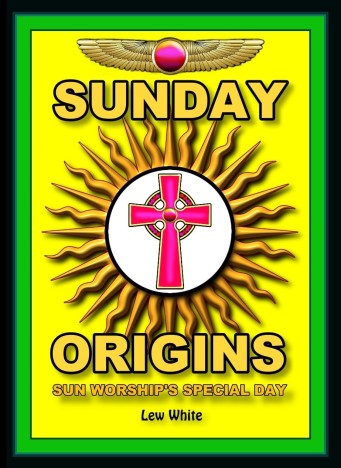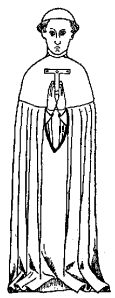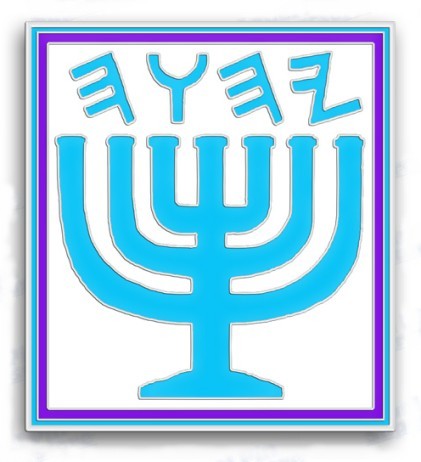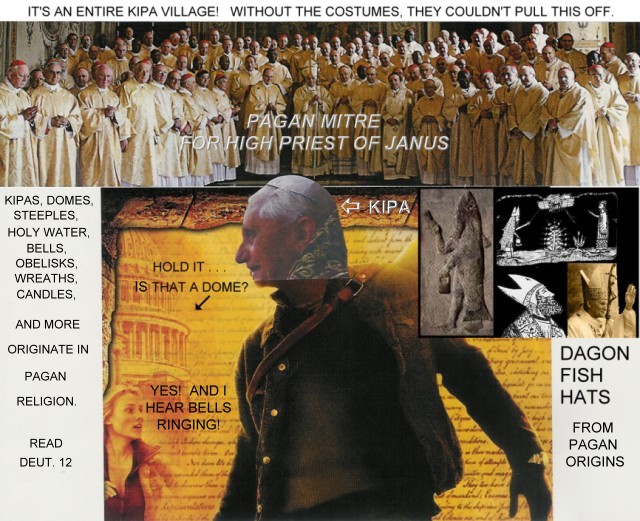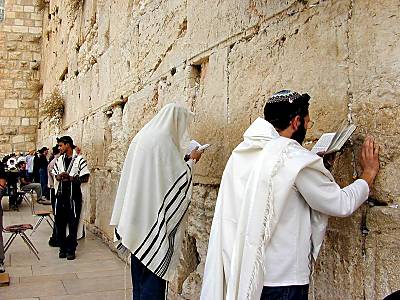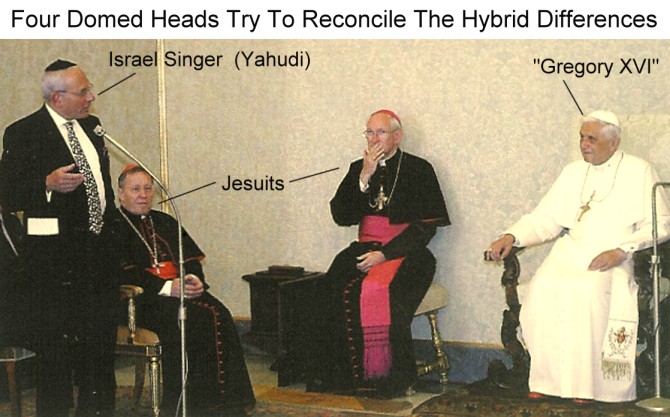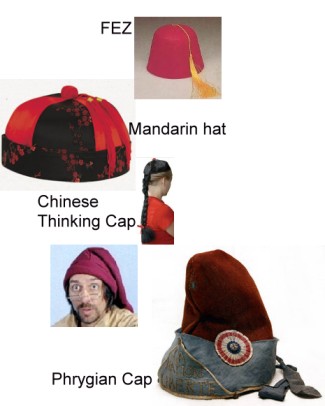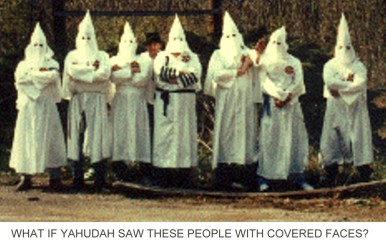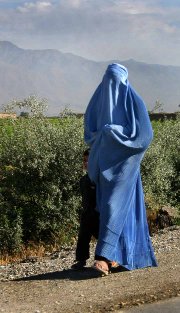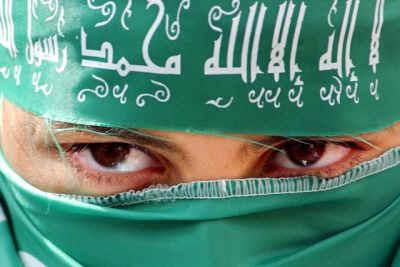KIPA
Try to spot the ACTORS - They want to draw attention to themselves
When the House of Yahudah (known as "Jews" today) found themselves in a state of captivity, either abroad or in their homeland, their captors often forced them to wear funny hats to distinguish them from the "regular" population of the captors. The Nazis used little yellow patches with the seal of Daud on them, but in other times a hat was the more common tactic employed. Today, the Yahudim force their own people to wear a hat.
As odd as it may seem, the domed beanie-hat seen on popes, cardinals, orthodox rabbis, and some oriental folks is derived from the Greek hat of Hermes, the Greek deity of the mind. Commerce, fortune, gymnastics, cunning, wisdom, and shrewdness were celebrated in his honor. Hermes is really big with the Masons.
To them he's the god of wisdom, also known as Thoth or Set. You've seen adaptations of his hat worn by graduates and their professors, but slightly disguised beneath a square mortar board, another weird custom inherited from the guilds (sort of union-run schools) of the Middle Ages. Ceremonies and initiations are very important to the hood-winkery that they engage in. Take a gander at this happy fellow, gleefully following the Hermetic traditions:
A WISE GUY ready for
the parade:  "DOCTOR"
is Latin for "TEACHER"
"DOCTOR"
is Latin for "TEACHER"
They taught building techniques and architecture, and were students of "masonry" -- which relates to the "mortar board" hat over the domed beanie. These guys were REAL masons, not members of the Blue Lodge, fiddling with swords and dreaming of being secret knights. When these brutes put on their "aprons of righteousness" with all the little symbols on them, it meant they had paid their union dues -- so they could work "righteously" (in good standing), and not working without being a guild member in good standing. When you research the origin of a little hat called a "FEZ", you'll see it's linked to all this information. 33rd degree Masons (the Adepts / Illuminati) are fond of wearing a big red FEZ with a tassel on it. This is just great fun, isn't it? Now when you watch them put on their "caps and gowns" at the graduation ceremonies, you can snicker under your breath a little, knowing they have NO CLUE why they are wearing such a costume. The following is a brief excerpt from the book, Fossilized Customs:
"Yarmulke" is a Yiddish word for the kipa, or skullcap seen worn by the pope, and most orthodox Yahudim on the street, in the classroom, and in the synagogues. Mosheh would not know what it is. Alfred J. Kolatch, an orthodox author and “rabbi”, states: "The skullcap has no religious significance in Jewish law.” He goes on to say that it has no basis in Scriptural or Rabbinical law. To trace the use of the cap to its source, we find that it came into wider use only in the 17th century, where before that only a very few Yahudim used it. Did Yahusha wear a kipa? All researchers and historians say NO, and there is no evidence of its use in any data or archaeological finds at all. The pope of Rome and his cardinals wear them, but that is because it was originally a Greek hat of a scholar, called the “hat of Hermes” (Hermes is a Pagan idol, of course). You will recall the “cap and gown” of graduates from schools and universities employs this “hat of Hermes”, topped with a square mason’s board. A mason is a layer of bricks, and the mason’s board holds the cement mix. These were scholars who graduated to different levels in their guilds; from apprentice to journeyman, then journeyman to master.
In ancient times, just prior to 186 BCE, the land of Yisharal was ruled by a Greek Seleucid, Antiochus Epiphanes IV. He was extremely cruel, and outlawed the Hebrew religion, forcing his Greek customs on them. In the record of 2 Maccabees, an apostate high priest (named “Jason” in translation, but really named Yahusha) helped this Greek ruler impose the Greek ways of living:
“And abrogating the lawful way of living, he introduced new customs contrary to the Torah; for he willingly established a gymnasium right under the citadel (the Temple), and he made the finest of the young men wear the Greek hat.” Recall that Hermes, the Greek deity of the mind, was associated with skills in commerce, fortune, gymnastics, cunning, and shrewdness. Reading the previous quote carefully, it is obvious that the gymnasium and the finest of the young men are linked to the special hat they were forced to wear.
This shows how the Greek culture was being forced upon Yisharal, along with their deity Hermes. The hat must have been an icon or badge of honor to the Greeks for skill in gymnastics, leaving no doubt that Hermes would be the deity related to the hat.
Paul writes at 1Cor. 11:7 that a man is not to have his head covered in the assembly, but a woman is required to, to keep from dishonoring one another’s headship. Yahusha is the man’s ‘head’, while a woman’s ‘head’ is her husband. We are to follow the Torah, and not add to it in any way: “Do not add to nor take away from it”. Dt. 12:32.Dt. 12:32.
Man-made customs, including all the camouflaged Paganism found in Christendom, are traditions that are forbidden in the worship of Yahuah. They represent more than a “strange fire”, but are like the golden calf. It is forbidden to worship Him after the customs of the Pagans. “The one who says he abides in Him ought himself to walk in the same manner as He walked.” ~ 1 Yn. 2:6. Walk in Light ~ the Torah. (END OF EXCERPT)
Here's more historical data on the use of the kipa (dome), the Greek hat of Hermes:
The DOME shape itself is derived from ancient Pagan symbolism, and was absorbed into the architecture of Christianity and Islam directly from Pagan temple architecture. The eye of the Sun (the principal Pagan deity) was able to "see" into his temple through an oculus at the upper-most section of the dome, which was simply an enormous hole in the top (see Pantheon, Rome). In some Christian churches (they often refer to a "church" as a building), the domed architecture will even include an enormous EYE centered in the center of the dome, looking down at the congregation. One of the most famous DOMED structures in the world was the Roman temple called the Pantheon, dedicated to many Roman deities. The dome was a secret allusion to the "dome of the sky", which the Pagans worshipped profusely. The word "domus" is Latin for "house," the dwelling or temple of Pagan deities in this case - but it also gives us words like "domestic." Dome is also slang for "head". "Dominus" means "lord."
The domed building known as St. Peter's Cathedral is modeled after the former Roman temples, and many government buildings around the world designed and built by Masons sport the Pagan architecture proudly. If you really dig, you'll find the shape is entirely rooted in the old Pagan theme, sex -- just as the steeples and obelisks are. The ancient root, dem, means to "join together" as it relates to sex. Look at the word "con-dom" and you see it. The word dominam was used for the male member. But keep reading . . . I'm sure there's a Shivalingam trying to Shival in there somewhere.
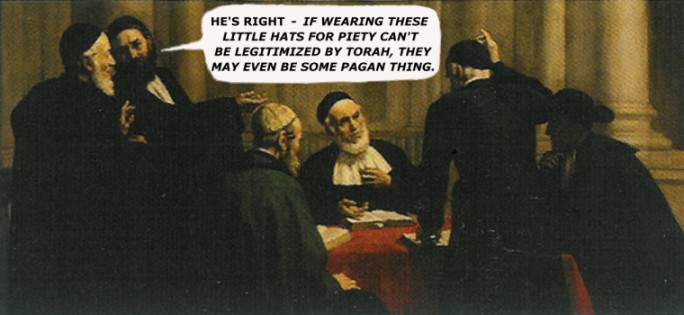
The nicolaitan approach to the functions within Yahusha's Body quickly became the norm, and Yahusha's authority was usurped by men, ranking their positions over one another.
So, why would anyone want to feel special wearing a little domed hat, wearing a dome on their dome? Obviously to make a statement. Hats were often used to designate a person's status. They added the propellers much later on (beanie-copters), and "dunce hats" were very popular with the school kids of long ago. Roman priests used hats to announce their office in the Church. Santa Claus wears a "Phrygian hat", exactly like the Roman deity "Mithras". Pagan priests also shaved their heads in various ways; one way was called a "tonsure", where the entire crown of the head above the ears was shorn, displaying the mark of their slavery to the SUN. The caps may have provided some protection from the sun's burning rays on the sensitive exposed scalps. But, that's only a guess, since the origin of the tonsure itself is buried in antiquity - but it is suspected to have been linked in some way to sun worship. Some people will believe anything you tell them, and will imitate what others do without question. I've heard that if you wrap your head up in a towel that is colored purple, the aliens (from outer space) will not be able to read your mind. No doubt, there's someone living near Roswell, New Mexico, that believes this. UFO museums would have no customers at all if people weren't so easily misguided. On that note, you HAVE to check out the article at:
www.fossilizedcustoms.com/strongdelusion.html

Dome of the Rock, Temple Mount, Yerushaliyim, Yisharal
We keep on shoving domes into the face of Yahuah, don't we?
Find out the Hindu source of the DOME design in this book:
From an Email:
Question: I was wondering about your position concerning women wearing tsitsith.
The tsitsith were "lengthened" by some wearers in order to draw attention to them; and Yahusha called the wearers "hypocrites", which means ACTORS. He knows our motives, He discerns our hearts and minds (Hebrews 4).
It's always a good idea to avoid wearing costumes just to draw attention to ourselves.
HERMES
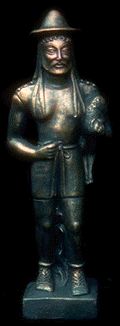
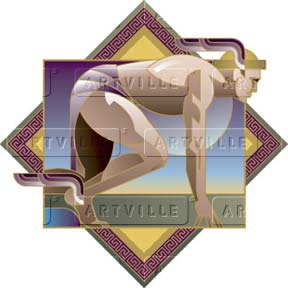
HERMES WAS CONSIDERED THE "MESSENGER" OF ZEUS, CORRESPONDING TO THE ROMAN MERCURY, OR NIKE
IS
THE
MOTHER OF HARLOTS?
(Not only the mother of harlots, but also of the abominations of the Earth)
(CLICK ON EASTER)
Indeed, this mother has a name!
Sophists Sophists were 5th century BCE Greek philosophers who specialized in providing instruction in ethics and in the art of public speaking. They were skilled in swaying opinions by using plausible sounding arguments, and using faulty reasoning to convince their listeners of elaborate perversions of the truth. They were highly respected, paid speakers, who dressed in robes of honor, like a graduate or choir person does today - that’s where these garments came from. Expert devisers of subtle tricks in speaking, their cleverness was highly refined, urbane, and cultured. This “sophistry” has been put to use in training men for the ministry throughout the centuries.
Most of the “church fathers” were sophists.
FOR FUN, DO A SEARCH USING THE KEY WORDS: KIPA, SUN, GOD
SEE PHOTO BELOW FOR MORE KIPA ACTION!
MORE TEXTS TO SEE HOW BELIEF WILL PRODUCE OBEDIENCE, BECAUSE WE LOVE Yahuah:
EX. 20:6, DEUT. 7:9, DEUT. 11:1, DEUT. 30:16, NEH. 1:5, DAN. 9:4, 1JN. 5:2,3, 2JN. v.6
Got Dome?
"ACTORS"
(Greek: hypocrites)
wearing their
DOMES:
Arnold Schwarzenegger ~
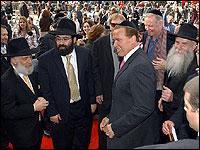
Michael Jackson ~

George W. Bush ~

Bob Dylan

NEXT, A Dome-tipping Karol Woljtyla,
the CATHOLIC SHAMAN OR POWWAW:

Gene Wilder ~

So, day told us to ver dem, an den to be called "rabbi". I'm not a rabbi.
Dat vas just to get your attention!
The Greek word, "hypocrite" literally means "false-face", because these "actors" when on-stage would hold masks over their faces which were attached to a stick. In public, there is very little that is not an act.
Trust no one, but Yahusha.
You don't need your dome to please Him. Chances are, He takes no pleasure in them.
Send this page to your group
click File, Send, Page
